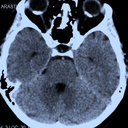Higher serum lipids and oxidative stress in patients with normal tension glaucoma, but not pseudoexfoliative glaucoma.
Açar sözlər
Mücərrəd
This study entailed a cross-examination of oxidant/antioxidant balance, high-density lipoprotein (HDL)-linked paraoxonase 1 (PON1) phenotypes, and levels of serum routine lipids among patients with normal tension glaucoma (NTG) or pseudoexfoliative glaucoma (PEXG) compared with healthy control groups. We aimed to investigate the links between oxidative stress (OS), HDL-related antioxidant enzyme activities and dyslipidemia in distinct subtypes of glaucoma. The study included 32 patients with NTG, 31 patients with PEXG, and 40 control subjects. Levels of PON1 and arylesterase enzymatic activity, total oxidant status (TOS), and total antioxidant status were measured by spectrophotometry and OS indexes (OSI) were calculated. The phenotype distribution of PON1 was determined using the dual substrate method. Blood serum levels of HDL, low-density lipoprotein, total cholesterol (TC), and triglyceride (TG) were measured. The TOS and OSI values in the NTG group were significantly higher compared with the other groups (both p < 0.01). The phenotype distribution found in the glaucoma and control groups were NTG: QQ, 59.4%; QR, 37.5%; RR, 3.1%; PEXG: QQ, 45.1%; QR, 48.4%; RR, 6.5%; and in the control group: QQ, 42.5%; QR, 50.0%; RR, 7.5%. Serum TC levels were significantly higher than the control in both NTG and PEXG groups, whereas TG was significantly higher in NTG only (p < 0.01 and p < 0.02, respectively). Hyperlipidemia, OS and variations in phenotype distribution of PON1 may play a role in the pathogenesis of different types of glaucoma.





